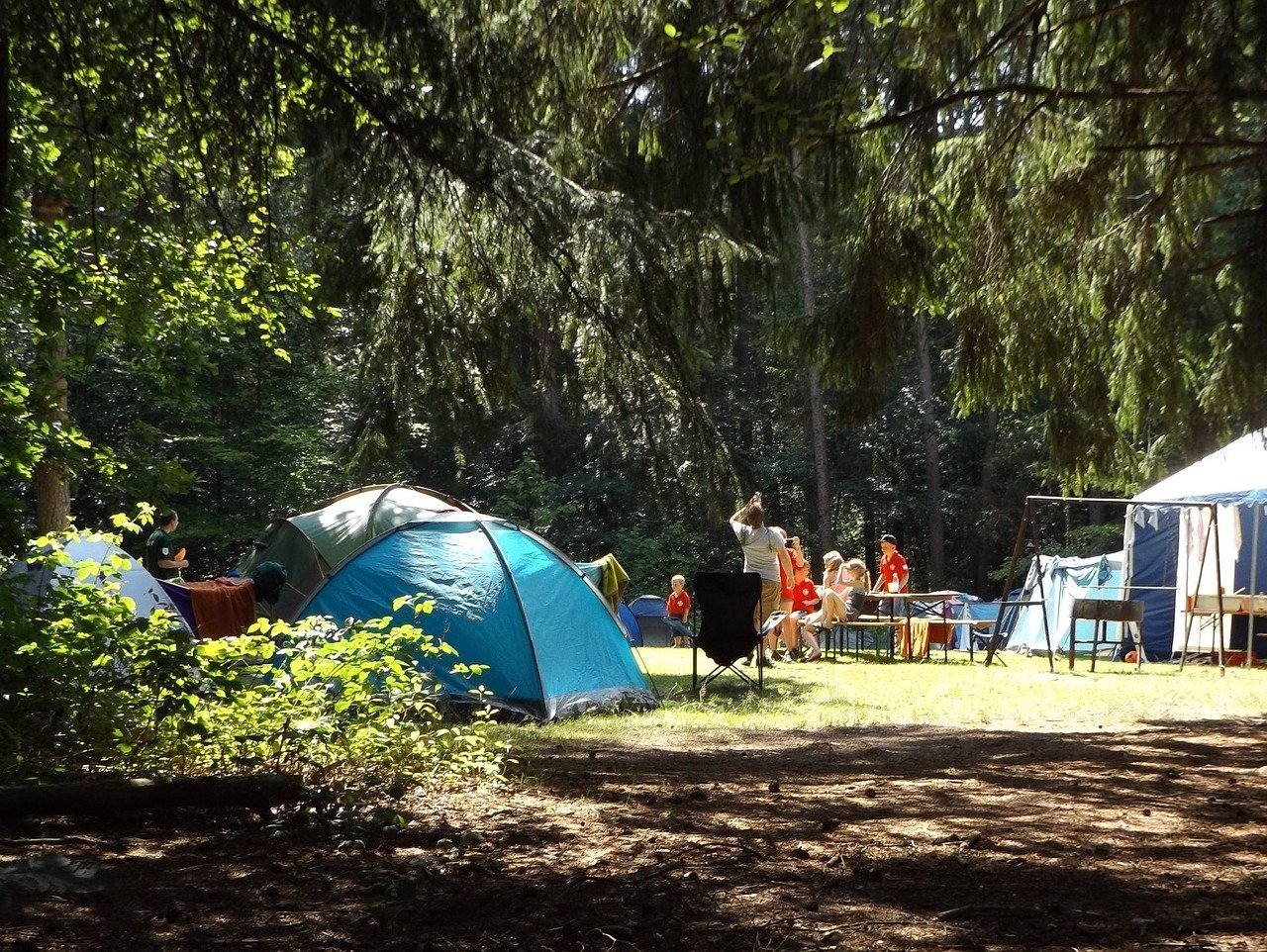Camping can be a wonderful experience; however, if you get bitten up by mosquitoes or run into a patch of poison ivy during your experience, you might just find yourself running for the hills.
Of course, there is no sure-fire way to keep all these troublesome bugs and itchy things at bay; however, there are precautions you can take to avoid them at all costs.
Where the Bugs Are

Typically bugs, especially mosquitoes, are found in grassy wetland areas and by bodies of water. Lakes, streams, and most especially ponds are known for their high infestation of mosquitoes. So, if you do not want to get bitten, stay away from grassy wetland areas and bodies of water.
Bugs’ favorite spots are in the wooded areas along the campsite as well. They love to hide in low-lying leaves, in the dirt, and on the trees themselves.
Another hot spot for bugs, especially wasps and yellow jackets, is near the dumpster. Bees are always looking for something sweet to suck on.
Tall grass can hide many things including bugs and ticks and snakes, so this is another area to be careful of or stay away from.
The Itches and Ouches of Natural Habitat
Poison ivy is no fun to come into contact with. Itching, inflammation and blistering may occur when coming into contact with this plant. Poison ivy is found in many places such as an open field or as ground cover. It is easy to spot, has three leaves and looks like many other common plants. It loves to hang out in the woods. Here is some more info on how to prevent and treat poison ivy.

Poison oak loves the wooded forest and sandy fields. It has a scalloped design to it and can cause itching, irritation, a rash and sometimes blistering as well. To learn more about the poison oak rash including pictures and remedies check out this article.

Poison sumac is the more potent of the poisonous plants. It is typically found near wetlands such as bogs. This plant resembles more of a bush than a plant and has a greenish blue leaf and red veins that are apparent. Washing your skin immediately after coming into contact if you recognize it is essential to lessen the severity of the rash, burning, and blistering.
Here is more info on Poison Sumac: Rash, Pictures and Treatment.
While it is impossible to avoid all of these things, you can take precautions.
Citronella coils, bug repellant, calamine lotion, oatmeal, aloe gel, essential oils, baking soda and other holistic treatments to bring along will lessen the severity.
For instance, if you get a sting from a bee or Yellowjacket, make a paste out of baking soda and water and apply to the sting, this helps draw out the stinger if it’s still in there and sooth the sting. This is something my mom swears by and always did for myself and my three siblings when we were kids and now I do that for ours and it really works!
It is best to acclimate yourself with the different types of insects and plant life you may come into contact with in your region. And try to stay clear of wooded areas and stay out in the clearings.
Related Posts:
- Top Health Benefits of Camping
- Fun Things to Do While Camping and What to do if it Rains.
- Tips and Tricks For the Basics of Camping in the Great Outdoors
- Smart Ways of using Aromatherapy Essential Oils in your Home
- Essential Oils ~ Tips on Starting Your Essential Oils Collection
- What are Essential Oils and how can I use them around the homestead?
Pin This Image:


:max_bytes(150000):strip_icc()/poison-sumac-pictures-4071931-berries-62a478c938bc45afb98f58bd382a5379.jpg?resize=950%2C633&ssl=1)
Pingback:Tips and Tricks For the Basics of Camping in the Great Outdoors - Just Traveling Along
Pingback:Fun Things To Do When Camping and What to Do When it Rains - Just Traveling Along